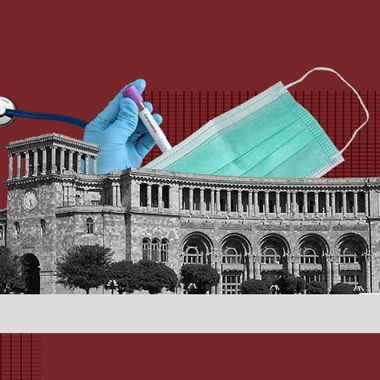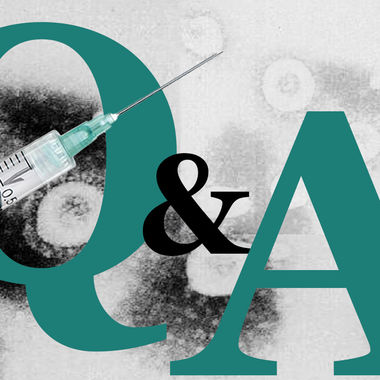With international business in hibernation and governments largely confined to damage control, Armenian policymakers seem to be not only managing the day-to-day issues but aiming to imagine a post-COVID-19 world where Armenia’s economic role is more visible and pronounced. Accordingly, a valid question to ask is how different will the world and our nation actually be as we reach this elusive post-quarantine state.
The World Will Mostly Be The Same
Human beings by their nature are heavily influenced by “recency bias,” meaning that the most recent history, news and environment will have the most impact on near-term decision-making. But what will the differences in economic settings actually be apart from better hygiene practices and improved distance working capacity?
It is quite unlikely that, social beings as they are, humans will be less fond of travelling or having dinner outings. Thus, the leisure, accommodation and travel industry, though heavily hit today, will likely see a comeback, at least in the long run. Instances of digital dinner parties have floated across the web – but don’t seem to have gained much traction.
Another area that is severely impacted across nations is, of course, the healthcare sector. It wouldn’t be unreasonable to expect more risk mitigation strategies, larger medicine stock-piles and medical equipment warehousing. Distance and digital healthcare and wearable solutions were hot innovation areas before and will likely be accelerated further, but other than that, few larger changes within this sector are foreseen or taking place as a result of COVID-19, at least for now.
Then there is the manufacturing sector. Acknowledging that the trend of supply chain reconstruction may accelerate, it is important to note that the ball was rolling even before the outbreak. Yes, the matter may become more emphasized, especially with regard to medical equipment production, but as a reference, the Medical Equipment, Supplies and Medicines category accounts for some 2-3% of total manufacturing output in advanced nations. So, any movement due to COVID-19 specifically will unlikely be dramatic or consequential.
While these are some thoughts on the potential structural issues at play, of particular interest for the short-to-medium term recovery of the global economy might be the health of the banking sector. A prolonged shutdown of large parts of economic activity might aggravate the outlook with non-performing loans. This can in turn burden banks’ ability to provide new credit for future investments when the crisis does subside.
Finally, there is the topic of increasingly forceful instances of monetary intervention in leading economies. The repercussions can indeed be meaningful, but then again, the matter has been around for years and is today referred to as “the dog that has not barked.”
Armenia’s Position as Recovery Sets In
If the central scenario, at least at the point of writing, is that the global economy’s sectoral structure or income distribution will not materially change after the COVID-19 crisis, what then are the prospects for improvement in Armenia’s share of global economic output and wealth creation?
The situation is still fluid but it is difficult to foresee any drastic shifts. Output increases are either a result of improved availability of labor, capital or natural resources, or their more efficient management, private or public. These things move slowly.
Even so, there are some issues that already point in a more positive direction over a longer term. With some additional optimal policy decisions when hitting forks in the road, taking a larger market share in the coming decade may become realistic.
Firstly, the increased digitization that Armenian society had to go through in a few weeks is important. If faster technological adaptation and increased digital savviness of domestic businesses and consumers will continue post COVID-19, then that will raise the productivity of the economy overall, improve its standards of living and help the nation catch up with its more advanced peers. Businesses and start-ups that can bring new solutions to a “tech-progressive” customer will not only be more incentivized to innovate, but also see increased success rates abroad when launching services and products in more established markets.
How realistic is a continued move in this direction? That will depend on the stakeholders involved and current momentum needs to be seized. What is certain is that many domestic businesses have at least acknowledged that, in some cases, their continued success will depend on creating new digital sales channels. There are many beneficial impacts from following along this path, but another important one is that technology, at its core, is disinflationary. Accordingly, this will further anchor inflationary trends and expectations – a welcome development for any developing nation.
The second area of interest to policymakers both in Armenia and abroad is related to food reserves and supply chains. Its acuteness seems to have subsided, but had just a couple of weeks ago, in light of potential disruptions in supplies, raised the perennial question of self-sufficient farming and subsidization. How things may change in a structural way is difficult to gauge, but results can be consequential for Armenia’s economic outlook. There are largely three options that can be pursued. The first option would be to boost warehousing capacity. Switzerland is an example of this practice, with one of the world’s largest food reserves (centrally overseen but decentralized, private sector warehousing). Armenia’s position, upon review of national statistics, is quite solid as well. Not only do some grains have more than 15 months of accumulated stocks, but the numbers on both stocks and level of self-sufficiency are generally trending upward. What’s more, some key staples are above 100% self-sufficiency.
Another option could be to raise productivity in the sector and aid investment into a highly-productive industrial-type of agriculture. One needs to acknowledge though that this will have to go hand in hand with substantial funding for R&D, innovation (e.g. marketplace software), laboratory and institutional bio-chemical research capacity. This hasn’t been Armenia’s strong suit before but could potentially be a promising area to pursue nonetheless.
Another alternative when it comes to farming would be to continue-as-is and carry on promoting current operations via financing, cost subsidization or otherwise. This would likely increase output levels. On the other hand, a large chunk of the population would be incentivized to remain in the highest-risk, lowest-productivity sector of the economy with difficult standards of living and reliant on agricultural processes of yesteryear. To summarize, whatever policy shifts Armenia witnesses will have a meaningful economic impact down the road.
A third, quite interesting matter that would certainly alter our economic realities would be any social security changes inspired by COVID-19. There is some appetite for this, at least if one interprets the floated health insurance reform back in 2019. That the epidemic has certainly revealed the need for additional institutional solutions like effective unemployment insurance is beyond doubt. The difficulty as always is minimizing abuse. But with seemingly much healthier levels of trust towards public authorities and a decreased shadow economy, this might be something to seriously reflect over. A solid institutional set-up would certainly increase the endurance and resilience of the Armenian labor market. There are much wider implications of a successful social security system than just cushioning economic dislocations. National labor market and economic competitiveness, economic flexibility, savings buffers are all derivatives of this.
A final issue to consider is the one related to management of the value of the local currency versus its counterparts. Such tools have a broad impact on economic structures and export competitiveness and are thus directly related to the share of Armenia’s goods and services in world markets. It is unclear whether this is what domestic policymakers have had in mind. Granted, there are risks involved, but any improved policymaking on this score would certainly be consequential with regard to achieving a stronger representation of Armenian produce abroad.
When There is a Will, There is a Way
To summarize, this discussion has pointed to some areas of relevance in light of the recent health matters and economic turbulence. Whether future steps toward achieving a stronger Armenian presence involve any of the ideas floated is unclear. Maybe that’s even beyond the point! What is important though is the proactiveness of the approach and the notion that one needs to avoid squandering this crisis as an opportunity to reform and progress. Fortunately, what has become clear, also in relation to other places, is the Armenian society’s strength and cohesion in difficult times. This cannot be but a function of high levels of prevailing trust, which by itself is the main component of structural reforms.
Samson Avetian is the author of: “Armenia’s Economy the Next 25 Years. Three Ways to Restructure the Ugly, the Bad and the Beautiful.”









EVN Report welcomes comments that contribute to a healthy discussion and spur an informed debate. All comments will be moderated, thereby any post that includes hate speech, profanity or personal attacks will not be published.